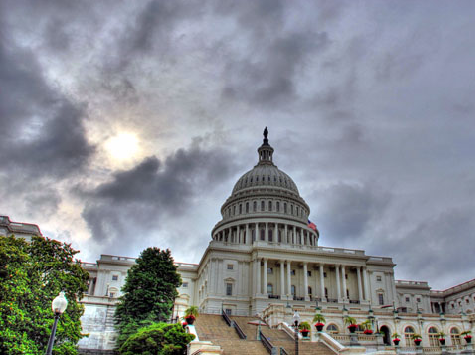Gallup recently released poll numbers showing that only 9% of Americans approve of the job Congress is doing. It is the lowest approval rating the US Congress has received in the thirty-nine years that Gallup has been conducting that poll. Heck, I have higher approval ratings from old girlfriends. And while those numbers seem abysmal, among independents, the number is actually 8%.
So with this pathetic single-digit approval rating, logic would dictate that we will see a drastic turnover in Congress in 2014, right? No. Reality is, you’re more likely to see Cher and Miley Cyrus get some class.
In September 2012, 13% of Americans gave Congress a favorable rating yet we returned incumbents to the House at a rate of 90% and to the Senate at a rate of 91%. Do Americans simply have an astounding level of cognitive dissonance between how they vote and how they feel? Actually, the answer is much more complicated than that and something New York and DC media pundits need to start inserting into their DNC talking points.
Congressional districts are localized, which means voters have specific issues they care more about than the average American. For example, a congressman in Louisiana might pay a great deal of attention to coastal restoration, while people in Iowa often would not put much importance on this issue. Similarly, a congressman in Iowa might do a lot of work on farm subsidies that Rhode Island voters would hardly consider paramount. This leads to a situation in which only 9% of people approve of the body of Congress, but clearly most congressional members have approval ratings that are considerably higher amongst their districts’ voters. The “throw the bums out” is a popular one on the national stage, but no one wants their bum thrown out. It is akin to the old movie story line “don’t you call my buddy a SOB, only I can do that.”
Each congressional district has also gone through a series of re-alignments which make the districts themselves highly one-sided. The majority of congressional districts in the United States are considered safely in the pocket for one party or another and the voters’ values skew to one direction or another. These ideological monolithic congressional districts make it easy for members of Congress to be beloved by a small group of people at home but disliked by a survey of national voters who may not share the same values.
Kay Hagan, a Democratic Senator in North Carolina, for example, is sitting at roughly 44% approval. Ted Cruz, who has become a popular fixture in Republican circles nationally, is nevertheless still hovering around 47% approval rating in his home state of Texas. Al Franken, who is a former comedian and divisive figure nationally, enjoys a 51% approval rating in Minnesota! Jeanne Shaheen has a 49% approval rating in New Hampshire. In the House, Justin Amash of Michigan’s approval rating is at 37%, while Congresswoman Carol Shea-Porter in New Hampshire’s approval rating is up to 42%. Rep. Jason Chaffetz of Utah stands at 54% according to this poll, but Rep. Jim Langevin of Rhode Island comes in at under 39%. Representative Greg Walden, a Republican out of Oregon has an approval rating of 39%, while his colleague from Alaska, Don Young, clocks in at 47%.
The above selection includes four senators and six representatives in Congress, splitting the partisan line right down the middle with five individuals from each party. The selection includes three females and seven males and ranges all over the country, from sea to shining sea. Still, the approval ratings of all of these individuals within their districts or states only reach as low at 37% at worst, and up to 54% at their height. There are plenty of other districts which would result in even higher approval ratings because of the makeup of the district and the skill of the politician in question, but it’s tough to even find polling numbers for those districts because they are so uncompetitive.
The disparity between approval of Congress generally and approval of congressional members within their own districts is the result of gerrymandering districts to be mono-chromatic, favoring red or blue to an extreme degree. This doesn’t mean people do not disapprove of Congress as a body–they clearly do. It simply means that Congress’ current composition is not the result of voter ignorance or cognitive dissonance. Instead, it is the natural outgrowth of a system that draws congressional district boundaries every ten years to reflect a certain ideology and partisanship over competitiveness. Just like a town 50-100 miles from you is different in socioeconomic factors, religiosity, and business competitiveness, each Congressional District and state is its own unique entity. The problem with the 9% Gallup number, while fun to read, is that it doesn’t reflect the reality of 435 Congressional Districts and 100 Senate seats.

COMMENTS
Please let us know if you're having issues with commenting.